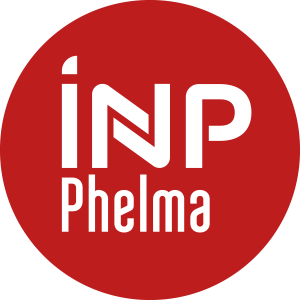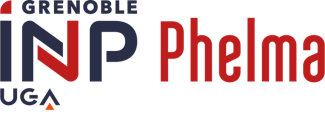Number of hours
- Lectures 5.25
- Projects 0
- Tutorials 5.25
- Internship 0
- Laboratory works 45.5
ECTS
ECTS 3.0
Goal(s)
Learn the most important numerical methods to solve ordinary differential equation and partial derivative equations in order to model physical phenomenon.
Contact David JAUFFRES, Charlotte VENDRELYContent(s)
- Course presentation - An introduction to modelling. Learn basic programming with Matlab®. Lab sessions: 8H00.
- Resolution of ordinary differential equations. Runge-Kutta methods. Lecture/tutorial: 1H30 - Lab sessions: 6H30.
- Finite differences method: implicit / explicit scheme. Lecture/tutorial: 3H00 - Lab sessions: 9H00.
- Linear system resolution (directs and iteratives methods). Lecture/tutorial: 1H30 - Lab session: 2H30.
- Numerical integration: Newton-cotes - Gauss. Polynomial interpolation. Lecture/tutorial: 1H30 - Lab sessions: 6H30.
- Finite elements method. Lecture/tutorial: 3H00 - Lab sessions: 13H00.
Prerequisites
Basic programming knowledge
Semester 7 - The exam is given in english only 
In person!
NORMAL SESSION:
DS theory + practice
Catch-up evaluation:
DS theory + practice
Duration: 4 hours
Documents allowed: all
CATCH-UP SESSION:
theoretical + practical DS
Duration: 4 hours
Documents allowed: all
-------------------------------------------------------------------------
In distance learning!
*NORMAL SESSION: *
DS theory + practice
Catch-up evaluation:
DS theory + practice
Duration: 4 hours
Documents allowed: all
CATCH-UP SESSION:
theoretical + practical DS
Duration: 4 hours
Documents allowed: all
session 1 condition normale : note de l'examen.
session 2 condition normale : note de l'examen.
Semester 7 - This course is given in english only 
- William Bober, Chi-Tay Tsai, Oren Masory : "Numerical and analytical methods with MATLAB"
- J. Rappaz, M. Picasso : "Introduction à l’analyse numérique"
- P. LASCAUX & R. THEODOR : "Analyse numérique appliquée à l'art de l'ingénieur", Edition Masson, 2 tomes
- G. DHATT & G. TOUZOT : "Une présentation de la méthode des éléments finis", Edition Maloine S.A., 2ème édition 1984
- B. LUCQUIN & O. PIRONNEAU : "Introduction au calcul scientifique", Edition Masson, 1996



